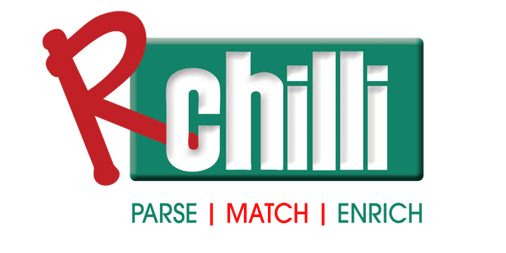Description

Candidate.ID

PandoLogic
Comprehensive Overview: Candidate.ID vs PandoLogic
Candidate.ID and PandoLogic are distinct products in the recruitment technology space, each offering unique features designed to address various aspects of the hiring process. Here's a comprehensive overview of both:
Candidate.ID
a) Primary Functions and Target Markets:
- Primary Functions: Candidate.ID is primarily known for its talent pipeline management and candidate engagement capabilities. It functions as a recruitment marketing automation platform that helps companies build and nurture candidate relationships. With features like automated candidate nurturing campaigns, scoring, and tracking of candidate interactions, it allows recruiters to engage with potential candidates more effectively.
- Target Markets: The target market for Candidate.ID includes mid-sized to large enterprises across various industry sectors that have ongoing recruitment needs. This tool is particularly beneficial for organizations that prioritize building talent pools and require ongoing candidate engagement strategies.
b) Market Share and User Base:
- Candidate.ID may have a niche user base focused on companies that value long-term candidate relationship management. The market share for specialized recruitment tools like Candidate.ID is typically smaller compared to more broad-based recruitment platforms, but it serves a critical function for companies looking to streamline their talent acquisition pipelines.
c) Key Differentiating Factors:
- Candidate.ID stands out due to its focus on automation in recruiting and marketing, emphasizing the nurturing of candidates over time rather than solely focusing on immediate hiring needs. Its candidate scoring and tracking capabilities provide recruiters with insights into candidate engagement levels, making it easier to prioritize candidates who are most likely to be interested in and fit for open positions.
PandoLogic
a) Primary Functions and Target Markets:
- Primary Functions: PandoLogic specializes in programmatic job advertising, utilizing AI technology to optimize job ad placements for better reach and engagement. The platform automates job distribution to numerous job boards and analyzes data to improve performance over time.
- Target Markets: PandoLogic targets a wide range of businesses, from small-to-medium enterprises (SMEs) to large corporations, particularly those with significant hiring volumes. Industries that frequently require optimization in job advertising, such as staffing agencies and companies with high turnover roles, are among their primary customer base.
b) Market Share and User Base:
- PandoLogic occupies a significant space in the programmatic recruitment advertising market, which is growing as more organizations look to leverage AI for recruitment optimization. Its user base encompasses a variety of industries, given its capacity to streamline the ad buying process and reduce reliance on manual advertising efforts.
c) Key Differentiating Factors:
- The main differentiator for PandoLogic is its AI-driven approach to job ad placement and optimization, which helps companies maximize their recruitment advertising ROI. Its ability to automate and analyze large amounts of job posting data to better target job seekers makes it an attractive choice for businesses looking to reduce advertising costs and improve the match quality of candidates.
Comparative Analysis
- Focus: Candidate.ID is more focused on candidate engagement and pipeline management, while PandoLogic excels in programmatic job advertising.
- Technology Use: Both use automation, though Candidate.ID emphasizes marketing automation, and PandoLogic leverages AI for ad placement.
- Market Orientation: Candidate.ID is tailored for strategic engagement with potential hires, whereas PandoLogic is for tactical job marketing efficiency.
- Differentiation: Candidate.ID differentiates through nurturing capabilities, while PandoLogic differentiates through AI optimization in advertising.
Both tools serve different but complementary functions within the broader recruitment process, and choosing between them would largely depend on an organization's specific hiring strategy and operational needs.
Contact Info

Year founded :
Not Available
Not Available
Not Available
Not Available
Not Available

Year founded :
2007
+1 212-419-4649
Not Available
United States
http://www.linkedin.com/company/pandologic
Feature Similarity Breakdown: Candidate.ID, PandoLogic
As of my last update, Candidate.ID and PandoLogic are both companies that operate within the HR and recruitment technology space, but they typically serve different aspects of the hiring process. Here’s a general breakdown of their features:
a) Core Features in Common
-
Recruitment Process Enhancement:
- Both Candidate.ID and PandoLogic aim to improve recruitment processes through automation and technology. They focus on optimizing how candidates are sourced, engaged, and hired.
-
Data-Driven Insights:
- Both platforms offer analytics and reporting features to provide insights into recruitment activities. This data-driven approach helps HR professionals make informed decisions.
-
Integration Capabilities:
- These platforms tend to offer integration features with common HR systems and tools, allowing for seamless data flow between different recruitment and HR platforms.
-
Automation of Tasks:
- Automation is a significant feature for both, aimed at reducing manual effort in the recruitment process. This includes automating communication, candidate scoring, and engagement.
b) User Interface Comparison
-
Candidate.ID:
- Candidate.ID typically focuses on a user-friendly interface that enables recruitment teams to engage with their talent pipeline effectively. Its UI is often noted for its clarity in tracking candidate interactions and engagement levels.
-
PandoLogic:
- PandoLogic is known for its straightforward interface optimized for job ad placement and management. It often provides a dashboard that is intuitive for setting up and viewing the performance of recruitment advertising campaigns.
c) Unique Features
-
Candidate.ID:
- Candidate Engagement Scoring: One of Candidate.ID’s unique features is its ability to provide detailed scoring on candidate engagement levels, which helps recruiters identify which candidates are most likely to convert to hires.
- Talent Pipeline Tracking: The platform offers robust tools for tracking and nurturing talent pipelines, providing deep insights into the candidate lifecycle.
-
PandoLogic:
- Programmatic Job Advertising: PandoLogic specializes in programmatic job advertising, enabling companies to reach a broader audience effectively and efficiently. This feature helps optimize ad spend by targeting the right candidates at the right time.
- AI and Predictive Analytics: PandoLogic leverages AI to predict job ad performance and optimize placement, a feature highly geared towards maximizing recruitment marketing ROI.
These distinct features set each product apart and define their specialization within the recruitment tech space. Candidate.ID leans more toward engagement and pipeline management, while PandoLogic focuses on programmatic advertising and recruitment marketing optimization.
Features

Not Available

Not Available
Best Fit Use Cases: Candidate.ID, PandoLogic
Candidate.ID
a) Best Fit Use Cases for Candidate.ID
Candidate.ID is a recruitment marketing automation platform that excels in talent pipeline building and management. It's designed to nurture candidates and engage them effectively until they are ready to move forward in the recruitment process.
-
Types of Businesses or Projects:
- Large Enterprises: Companies with extensive recruitment needs can benefit from Candidate.ID’s ability to manage large talent pools and automate engagement strategies.
- Recruitment Agencies: Agencies looking to maintain relationships with vast networks of candidates and ensure a steady flow of qualified applicants.
- Industries with Long Hiring Cycles: Sectors like healthcare, engineering, and aerospace where the hiring process is prolonged and nurturing candidates is crucial.
-
Key Features:
- Talent pipelines for various roles and departments.
- Automated candidate scoring and engagement to prioritize candidates.
- Detailed analytics to track candidate readiness and engagement levels.
d) Industry Verticals & Company Sizes:
- Healthcare, Engineering, Aerospace: Industries with complex hiring requirements benefit from ongoing candidate engagement.
- Enterprise-Level Organizations: Large businesses with substantial recruitment operations find Candidate.ID’s marketing automation beneficial for scaling recruitment processes efficiently.
PandoLogic
b) Preferred Scenarios for PandoLogic
PandoLogic focuses on programmatic job advertising using AI to optimize recruitment advertising strategies across different platforms, ensuring that job postings reach the right audience effectively.
-
Types of Businesses or Projects:
- Companies with High-volume Hiring Needs: Businesses in retail, hospitality, and customer service sectors where there is a continuous need to hire large numbers of roles quickly.
- Human Resource Teams Seeking Efficiency: Teams looking to automate ad spend and targeting to improve hiring ROI.
- Organizations Expanding Into New Markets: Companies that need to attract talent from new geographical areas can leverage PandoLogic’s reach and targeting capabilities.
-
Key Features:
- AI-driven job ad distribution and optimization.
- Performance analytics to track ad effectiveness and budget utilization.
- Large distribution networks for maximizing ad visibility.
d) Industry Verticals & Company Sizes:
- Retail, Hospitality, Customer Service: Industries with frequent staffing needs and high turnover rates use PandoLogic for its efficiency in sourcing candidates quickly.
- SMBs to Large Corporations: From small businesses needing to scale hiring efforts effectively to large corporations managing expansive recruitment operations, PandoLogic caters to a diverse range of business sizes.
Conclusion
Candidate.ID and PandoLogic serve different purposes within the recruitment process. Candidate.ID is ideal for nurturing and managing candidate engagement over time, making it suitable for companies with longer hiring cycles and complex job roles. In contrast, PandoLogic excels in programmatic job advertising, making it the better choice for businesses needing to optimize their job ad spend and reach high volumes of candidates effectively. Both tools cater to a variety of industries and company sizes, with Candidate.ID appealing more to enterprises and industries needing deep candidate engagement and PandoLogic delivering value through efficient, high-volume candidate sourcing.
Pricing

Pricing Not Available

Pricing Not Available
Metrics History
Metrics History
Comparing teamSize across companies
Conclusion & Final Verdict: Candidate.ID vs PandoLogic
To provide a comprehensive conclusion and verdict comparing Candidate.ID and PandoLogic, I will analyze each product's strengths and weaknesses, evaluate their overall value, and offer recommendations for users deciding between the two.
Conclusion and Final Verdict
a) Best Overall Value
PandoLogic: PandoLogic generally offers the best overall value for organizations focused on automating and optimizing their recruitment advertising. It excels in leveraging AI-driven solutions to reach a broader audience efficiently and economically, which is ideal for companies with high-volume hiring needs.
Candidate.ID: Candidate.ID is particularly valuable for companies prioritizing talent acquisition through nurturing and engagement. Its focus on recruitment marketing and candidate pipeline management makes it a great fit for organizations that rely on passive candidate sourcing and long-term talent relationship building.
Overall, the best value depends on your specific needs:
- Choose PandoLogic if you need efficient job advertising and candidate attraction through AI and data analytics.
- Choose Candidate.ID if you want to enhance candidate engagement and build lasting relationships with potential hires.
b) Pros and Cons
PandoLogic:
- Pros:
- AI-driven platform that optimizes job ad placements for maximum efficiency.
- Cost-effective solution, especially for high-volume recruitment.
- Provides data analytics to track and improve recruitment campaigns.
- Automation reduces time-to-hire and enhances candidate quality.
- Cons:
- May require integration with existing Applicant Tracking Systems (ATS) for full functionality.
- Limited focus on longer-term candidate engagement as it emphasizes immediate recruitment advertising.
Candidate.ID:
-
Pros:
- Highly effective in nurturing and engaging both active and passive candidates.
- Provides detailed insights into candidate behaviors and interests.
- Enhances employer branding through personalized communication.
- Useful for building and maintaining a robust talent pipeline.
-
Cons:
- May not address immediate high-volume hiring needs as effectively as PandoLogic.
- Requires more involvement in campaign creation and ongoing candidate relationship management.
c) Specific Recommendations
-
Assess Your Recruitment Needs: Determine whether your priority is immediate recruiting and job ad placement (favoring PandoLogic) or developing long-term candidate relationships and talent pools (favoring Candidate.ID).
-
Consider Integration and Ease of Use: Evaluate how easily each solution integrates with your current systems and processes. Decide based on your capability to implement and manage these platforms effectively.
-
Budget and ROI Analysis: While both platforms offer efficiencies, compare costs against potential ROI. Factor in not only monetary savings but also time saved and improvements in candidate quality or engagement.
-
Try Demos or Trials: If possible, engage in trials or demonstrations to firsthand experience the platforms' functionality, user interface, and their fit with your organization's HR strategy.
By considering these recommendations, organizations can make a more informed decision that aligns with their talent acquisition goals and operational capabilities.
Add to compare
Add similar companies




